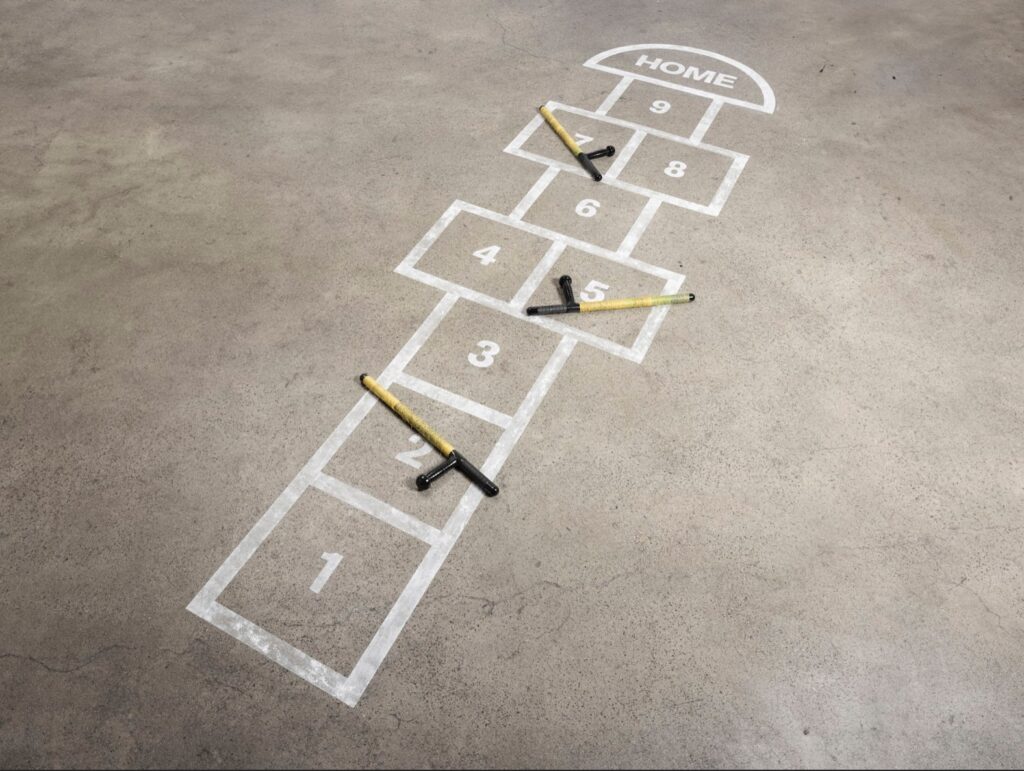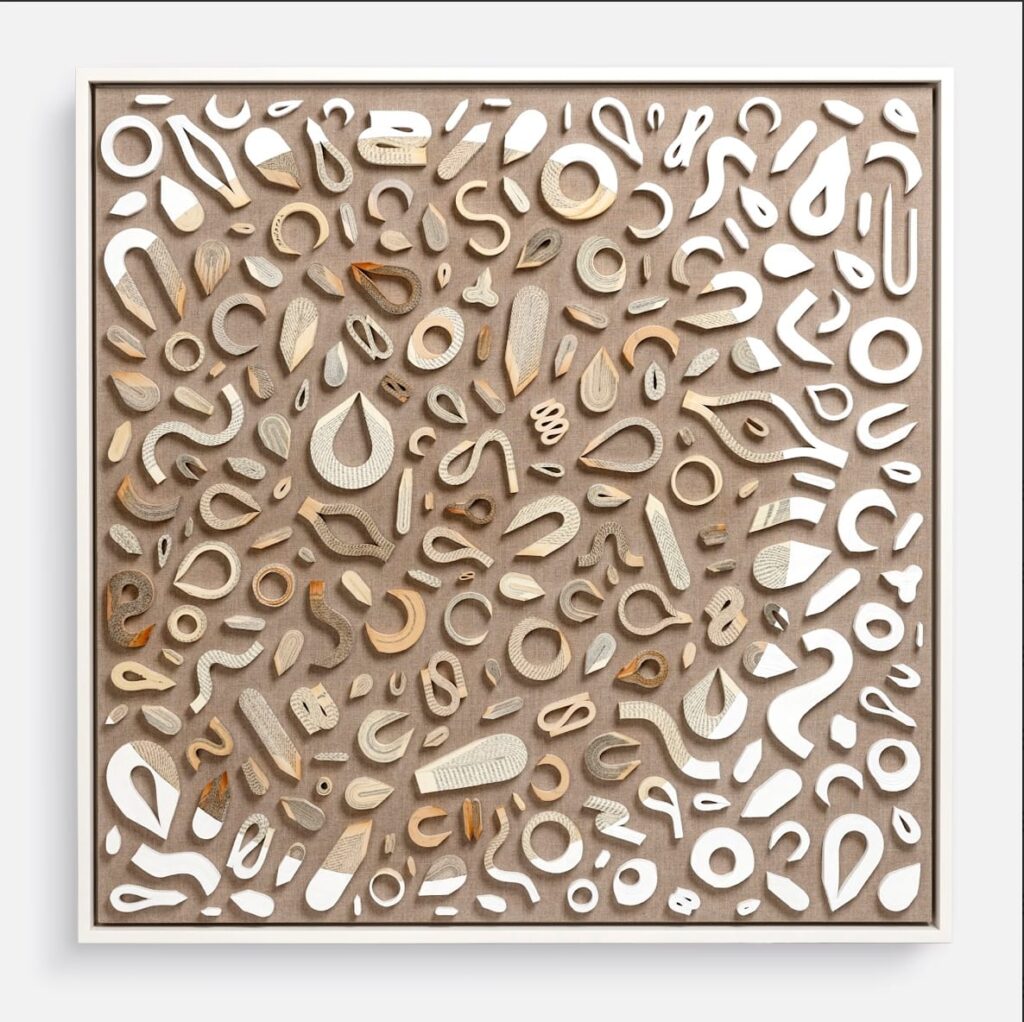Share this
Brian Singer, also known as Someguy, is a San Francisco-based multidisciplinary artist and graphic designer whose diverse practice ranges from the manipulation of paperback books to large-scale installations. Intimacy meets the provocative with unexpected site-specific projects that move beyond the traditional white-cube gallery spaces. Informed by his Japanese heritage and his mother’s internment during World War II, Singer’s work is often focused on social commentary. He embraces the complexities of human connection, communication and societal dynamics with awareness and empathy. Singer addresses the problems we collectively face as he questions cultural symbolism through his art.
He has exhibited at the San Francisco Museum of Modern Art, Jack Fischer Gallery, and the Skirball Cultural Center. His solo show, Everything can and will be used against you, is currently on view at the Torrance Art Museum in California until March 2, 2024.

Hello Brian, thanks so much for chatting with me today. I’d love to know about your trajectory as an artist, when and how you first began your practice?
Going way back, my art career probably started while lying on the kitchen floor as a child and filling in coloring books with my mother. At least, that’s the first memory I have of being interested in art (if coloring books count). But throughout my childhood and high school, I used art as an outlet, probably because I enjoyed making things that others could recognize and appreciate. I also studied art and design in college, but I think my practice began forming afterward with the launch of The 1000 Journals Project. This collaborative art experiment reached over 40 countries, received quite a bit of press, and eventually turned into a book, documentary, and exhibition. From there, my pursuits have wandered far and wide (I have a bit of a problem focusing on one thing), but I think they are beginning to tell a more cohesive story.

What was your childhood in San Francisco like, how was the city changed in your eyes?
I actually grew up about an hour south of San Francisco, in Cupertino, best known as the home of Apple. Back then, our backyard was a peach orchard, so there was plenty of fort building, riding bikes around the neighborhood, and your typical 7-11s and Blockbuster Video stores. I moved to San Francisco in 2000, so I’ve been here for over 23 years, and in that time there have been plenty of ups and downs. I arrived just in time for the first dot-com crash and pink-slip parties, but it was energizing just to be in SF. I look around now and things feel different. That’s partially because they are, but I think it’s also because I’m older and my lifestyle has settled down a bit. In my 20s, when I’d hear a sideshow or fireworks being lit off at 2 AM for no discernable reason, I’d think, “Hell yeah, people are having fun,” and now I grumble and put in earplugs. The doom and gloom articles feel like they’re sensationalizing things, but some of the luster has definitely been tarnished in the past few years. Covid really wreaked havoc on SF, particularly with the unhoused communities and folks in need of substance or mental health support. So yes, the city has definitely changed, but I suppose I have as well.

What is your most common source of inspiration?
San Francisco. Technically, it could probably be any city, but being outside in the real world is what does it for me. Most of my ideas come while walking somewhere and observing things around me. It could be a sticker someone put up, a location that’d be good for a piece of art, or someone just being 100% themself, giving zero fucks and cruising down the street. All of the stimulation of the city provides me with a never-ending source of exciting nuggets and inspiration. That and hypocrisy. Nothing gets me inspired to make work more than hypocrisy.
You’ve worked so much with the deconstruction of books, is there a story behind the first time you took one apart? How did you come to use it in your art?
I’ve always loved books because as a child they were a place of escape and where my imagination could run wild. I still read physical books and enjoy flipping the pages and the tactile nature of the experience. The first real experimentation with books began because a newspaper had broken down presidential candidates’ speeches and visualized how often they repeated certain things like “war on terror.” It was fascinating to see which talking points they emphasized and how much. I decided to explore this notion of word frequency with the Bible and began redacting one by crossing out every word except for instances of “Love” or “Evil.” It turns out that “Evil” shows up about twice as many times as “Love,” from which you can draw your own conclusions. This eventually led to cutting books up and examining the patterns formed just on the edges of the paper. And that led to painting a circle on every page of a book, cutting it into slices, and trying to reform the shape using the edges of the paper. I continue to work with books because they carry so much meaning, be it a romance novel or Catcher in the Rye.

Speaking of books, do you have an all-time favorite? If not, a go-to genre or author?
I’m a big sci-fi and fantasy fan (though I read pretty much anything). I particularly gravitate towards dystopian novels, as they seem the most accurate in portraying human behavior.
Would you ever consider yourself a poet?
I don’t think I would in the traditional sense. I love wordplay and using text in my artwork, but to call myself a poet would just be insulting to actual poets. I’m more of a “magnetic poetry” kind of poet, I think.
How does your work as a graphic designer compound with the more sculptural elements you work with?
There’s a substantial overlap between elements of design and the visual language artists use. The goals may differ but they both leverage language, structure, hierarchy, beauty, tension, movement, meaning, etc. The main difference may be digital versus physical, as most of my design work is computer-based but my art has physicality. Much like my affinity for books’ tactile nature, I enjoy working with materials and objects. Things tend to be meticulous either way, but it’s much more challenging and interesting to me if it’s with physical elements. Artificial intelligence can’t do that, yet.

Do you remember the first artwork/object you fell in love with?
I wish I did. I feel like somewhere in my childhood there was a moment where something just captivated me and changed the course of my life, but I don’t recall. I do, however, remember loving album covers quite a bit. One that stuck with me was the 12” single for the song “Modigliani (Lost in Your Eyes)” by Book of Love in 1987, which featured one of his paintings. The pairing of image and song was perfection to me despite being created roughly 70 years apart.
You have a show up right now at the Torrance Art Museum called Everything you say can and will be used against you. Was there a certain piece that snow-balled the series, or had the idea behind the exhibit been on your mind for a while?
The idea behind the show has permeated much of my work over the past several years as I’ve focused on a number of injustices that never seem to go away. The show provided a vessel to pull them all together and tell a more cohesive story. On one hand, in the piece American Pastime, I’m focusing on the often overlooked and conveniently forgotten actions of the past. Set against the backdrop of a corn hole game, the text, “As long as grass grows or water runs,” highlights the broken promise Andrew Jackson made to Native Americans regarding their land rights. Sitting not too far away is Playtime, which transforms the familiar childhood game of hopscotch into a stark commentary on the lived experience of the BIPOC community in the face of systemic injustice. Wrapped in disassembled “Don’t tread on me” Gadsden flags, police batons highlight the lasting impact on youth forced to navigate the realities of discrimination and the potential for violence. One piece is about the past, the other reflects life today, but both reflect the narrative of how we treat each other in this country.

The ongoing series Life Support feels very colorful despite its serious theme. Irony is not only present throughout the show, but in your site-specific installations as well. Was that always a conscious choice within your work, or did that style of confrontation form during the making process?
I tend to gravitate towards things that are aesthetically pleasing to the eye but the content punches you in the gut. It’s like drawing people in with beauty, so the medicine goes down better. That and humor both provide a path into complex subject matter and make it more accessible, I think.
Can you talk to me about any other ongoing series you might be working on, or perhaps new work that you’re excited about?
One of the pieces in the show, Kindling #3, was made using banned books, which continues to be a timely topic given the dramatic rise in books being challenged in certain states. I’ve been working in my studio on more pieces in this series. My partner, Laura Hapka, and I are also working on a temporary large-scale public piece, which I hope to be able to share details about soon (it’s all under NDA). And finally, I’ve been exploring how Asian males have been represented (or not) in Hollywood. Specifically, the role models I saw growing up in the 70s and 80s and how their depiction shaped my identity. Some interesting things are coming out of this inquiry and I’m hoping to form a body of work around it. Remember me mentioning I have a hard time focusing on one thing?
What is something you wouldn’t be able to live without?
Hope. My friends might sometimes describe me as a pessimist, but I think I’m a closet optimist. In the face of this never-ending onslaught of challenges that face society, I keep trying. Or maybe it’s just that I always like an underdog story, the unexpected victory against all odds. So, I still have hope.
